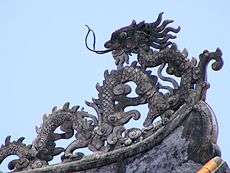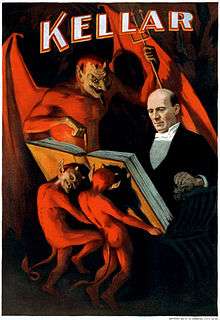Legendary creature


A legendary creature is an animal described in non-historical stories that sometimes involve the supernatural. Other legendary animals, such as the unicorn, were claimed in accounts of natural history by various scholars of antiquity.[1]
The definitions of legendary and mythological have been debated with no widely agreed upon application.[2] Some legendary creatures have their origin in traditional mythology and were believed to be real creatures, for example dragons, griffins, and unicorns.[2][3] Others were based on real encounters, originating in garbled accounts of travelers' tales, such as the Vegetable Lamb of Tartary, which supposedly grew tethered to the earth (and was actually a type of fern).[4]
Medieval symbolism of legendary creatures
The origins to many legendary creatures can be found in writings from the Middle Ages. These descriptions emerged as ways to convey important concepts and messages through symbolism and metaphor rather than function as literal interpretations. Medieval accounts of these creatures often appear quite whimsical, but it should be understood that portraying the natural world’s physical accuracy was not likely a relevant priority.
Unicorns have a variety of interesting descriptions. These creatures were described as extraordinarily swift and unable to be caught by traditional methods.[5]:127 It was believed that the only way for one to catch this beast was to lead a virgin to its dwelling. Then, the unicorn was supposed to leap into her lap and go to sleep, at which point a hunter could finally capture it.[5]:127 In terms of symbolism, the unicorn was a metaphor for Christ. Unicorns represented the idea of innocence and purity. In the King James Bible, Psalm 92:10 states, "My horn shalt thou exalt like the horn of an unicorn." This is because the translators of the King James erroneously translated the Hebrew word re'em as unicorn.[5]:128 The unicorn was described as a sort of young goat with a solitary horn in the middle of its brow.But if you take and read the verse in a different version say the ESV (English Standard Version), it states "But you have exalted my horn like that of a wild ox; you have poured over me a fresh oil". In Christian hermeneutics, the single horn represents the unity between The Father and Christ.[6] The unicorn’s small size signifies the humility of Christ.[5]:128
Another common legendary creature which served allegorical functions within the Middle Ages was the dragon. Dragons were identified with serpents, though their attributes were greatly intensified. The dragon was supposed to have been larger than all other animals.[5]:126 It was believed that the dragon had no harmful poison but was able to slay anything it embraced without any need for venom. Biblical scriptures speak of the dragon in reference to the devil, and they were used to denote sin in general during the Middle Ages.[5]:126 Dragons were said to have dwelled in places like Ethiopia and India, based on the idea that there was always heat present in these locations.[5]:126
Medieval communities did not only apply legendary characteristics to imaginary animals. Existing creatures were often given extraordinary descriptions. Vultures were considered to be virtuous, and promote good health.[7]:3 Remedies for migraines, eye problems, and possession were derived from vultures. It was said rubbing its grease into a traction animal you are selling would always allow one to receive the asking price.[7]:4 Dogs also acquired many mythological connotations. It was believed that the gall of a black male dog could act as a talisman protecting a house from evil medicines. Also, the tick from the left ear of a dog, worn as an amulet, was said to relieve all pains.[7]:4 Elephants were frequently utilized for symbolic purposes. As with many interpretations of our world in medieval times, the elephant’s significance alluded to religion. It was said that elephants illustrated God’s graciousness to man.[8]:13 "God ordained the elephant, so vast in size, to be subject to man…because we have been made in the likeness of God and may observe His incalculable wisdom in the biggest of animals."[8]:13
While many of these creatures serve the purpose of symbolizing religious concepts, others point to social aspects of the medieval period. This is evidenced in the centaur. The invention of the stirrup allowed people to become more unified with their horses. This led to a revolutionary way of conducting battle from horseback, and embodied the ideology behind the mythological centaur. Historian Lynn White argued that the stirrup was the most critical development in medieval Europe. White concluded, "Antiquity imagined the Centaur; the early Middle Ages made him the master of Europe."[9] Stirrups played a crucial role in the lives of people at this time, and the centaur served as an appropriate symbol to express this importance.
Imaginary or not, animals served allegorical functions for people in this time period. Physical detail was not the central focus of the artists depicting them, and medieval bestiaries were not proper biological categorizations. Creatures like the unicorn and griffin were not categorized in a separate "mythological" section in medieval bestiaries.[8]:124 Such a distinction was irrelevant as the symbolic implications were of primary importance. Animals we know to have existed were still presented with a fantastical approach. It seems the religious and moral implications of animals were far more significant than matching a physical likeness in these renderings. In The Medieval Artist’s Dilemma in Depicting Animals, Nona C. Flores explains, "By the tenth century, artists were increasingly bound by allegorical interpretation, and abandoned naturalistic depictions."[8]:15
The rationale for why people told these tales and rendered animals in such an imaginative way must be considered in order to gain a more complete understanding of these legendary creatures. When considering the idea of magic in medieval minds, historian Richard Kieckhefer explains, "Magic is not meant to work but to express wishes, or to encode in symbols a perception of how things do or should work."[10] Medieval attempts to understand nature were not typically parallel to modern efforts. It was likely not the goal of people in the Middle Ages to depict their world for what it was materially, but rather what it could represent conceptually.
See also
| Wikimedia Commons has media related to Legendary creatures. |
Notes
- ↑ The Encyclopaedia Britannica: A Dictionary of Arts, Sciences, Literature and General Information. University Press. 1911. p. 581.
- 1 2 Bascom, William (1984). Alan Dundes, ed. Sacred Narrative: Readings in the Theory of Myth. University of California Press. p. 9. ISBN 9780520051928.
- ↑ Simpson, Jacqueline; Roud, Steve (2000). A Dictionary of English Folklore. Oxford University Press. ISBN 9780192100191. Retrieved 24 March 2013.
- ↑ Large, Mark F.; John E. Braggins (2004). Tree Ferns [ILLUSTRATED]. Portland, Oregon: Timber Press, Incorporated. p. 360. ISBN 978-0-88192-630-9.
- 1 2 3 4 5 6 7 Gravestock, Pamela. "Did Imaginary Animals Exist?" In The Mark of the Beast: The Medieval Bestiary in Art, Life, and Literature. New York: Garland. 1999.
- ↑ J. L. Schrader. The Metropolitan Museum of Art Bulletin, New Series, Vol. 44, No. 1, A Medieval Bestiary (Summer, 1986), pp. 1+12-55, 17.
- 1 2 3 Horden, Peregrine. "What’s Wrong with Early Medieval Medicine?" In Social History of Medicine. 2009.
- 1 2 3 4 Flores, Nona C., "The Mirror of Nature Distorted: The Medieval Artist’s Dilemma in Depicting Animals" In The Medieval World of Nature. New York: Garland. 1993.
- ↑ Roland, Alex. "Once More into the Stirrups" In Technology and Culture, Vol. 44, Issue 3, 574-585. 2003, 576.
- ↑ Kieckhefer, Richard. "The Specific Rationality of Medieval Magic" In The American Historical Review, Vol. 99, Issue 3, 813-836. 1994, 814.
References
- O'Flaherty, Wendy. Hindu Myths: A Sourcebook. London: Penguin, 1975.